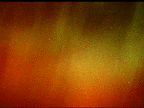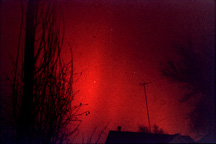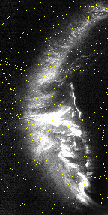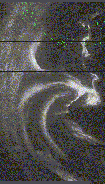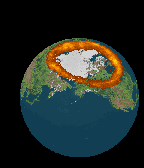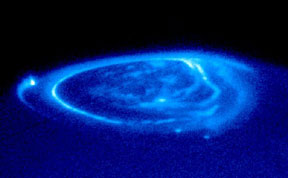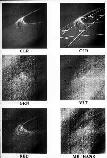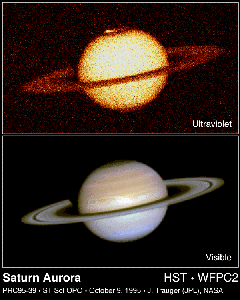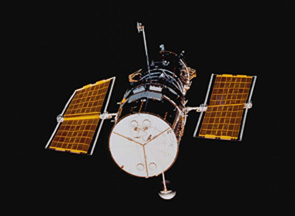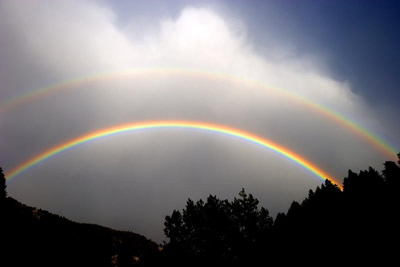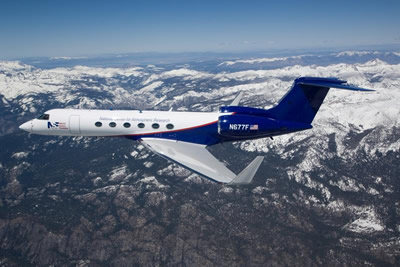Aurora Image and Multimedia Gallery
Earth's Aurora | Jupiter's Aurora | Saturn's Aurora
Earth's Aurora
_s.gif) |
|
_s.gif) |
This is an example of the auroral lights when seen as patches. (Courtesy of Jan Curtis) (9K JPG) |
_s.gif) |
This is an example of the auroral lights when seen as bands. (Courtesy of Jan Curtis) (11K JPG) |
_s.gif) |
This is an example of the auroral lights when seen as rays. (Courtesy of Jan Curtis) (14K JPG) |
| This is an example of the auroral lights when seen as veils. (Courtesy of Madai A. Frey) (109K JPG) |
|
| This is a type-A Great Red Aurora. This aurora was caused by a solar magnetic storm of exceptional intensity (during the days of February 10-11, 1958). This was about the 13th largest magnetic storm in recorded history. This photo was taken by Bert Vorchheimer on February 10, 1958, the day before his daughter's birth. A very special day all around! (Copyright Bert Vorchheimer) (40K JPG) |
|
| This is a composite image taken from DMSP showing the southern lights. July 21, 1992 (Courtesy of DMSP, NGDC and NOAA/DOC) (51 JPG) |
|
| This is an auroral image captured by DMSP on August 21, 1993. (Courtesy of DMSP, NGDC and NOAA/DOC) (88K JPG) |
|
| A view of the southern lights as captured by astronauts on the Shuttle Discovery.
(Courtesy of NASA, Astronaut Overmeyer and Dr. Halliman) (55K JPG) |
|
| A view of the southern auroral oval as captured by astronauts on the Shuttle Discovery.
(Courtesy of NASA, Astronaut Overmeyer and Dr. Halliman) (101K JPG) |
|
| A global view of the northern auroral oval superimposed on an image of the Earth's surface. (Courtesy of Dr. L. A. Frank with the VIS instrument team of the Polar spacecraft and NASA Goddard) (56K GIF) |
Jupiter's Aurora
Earth isn't the only planet with aurora. This image shows Jupiter's auroral oval around its magnetic north pole. This ultraviolet image was captured by the Hubble Space Telescope in November 1998. Image courtesy NASA, ESA, the Hubble Heritage Team (STScI/AURA), and John Clarke (University of Michigan). (45K JPEG) |
|
| An image of Jupiter's aurora taken by the Galileo spacecraft. Image courtesy NASA. (45K JPG) | |
| An image of Jupiter's aurora taken by the Galileo spacecraft. Image courtesy NASA. (45K JPG) |
Saturn's Aurora
An image taken by the Hubble Telescope in October, 1995. (Courtesy of NASA) |
Links to other Image & Multimedia galleries:
Planets & Moons: Mercury, Venus, Earth, Moon, Mars, Jupiter, Saturn, Uranus, Neptune, Pluto
Others: Asteroids, Astrophysical Objects, Comets, Space Missions, Sun, Space Weather


